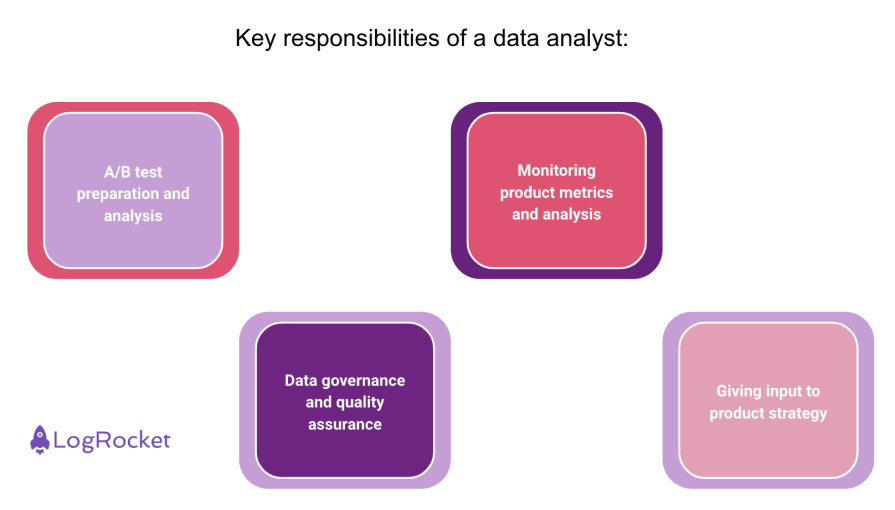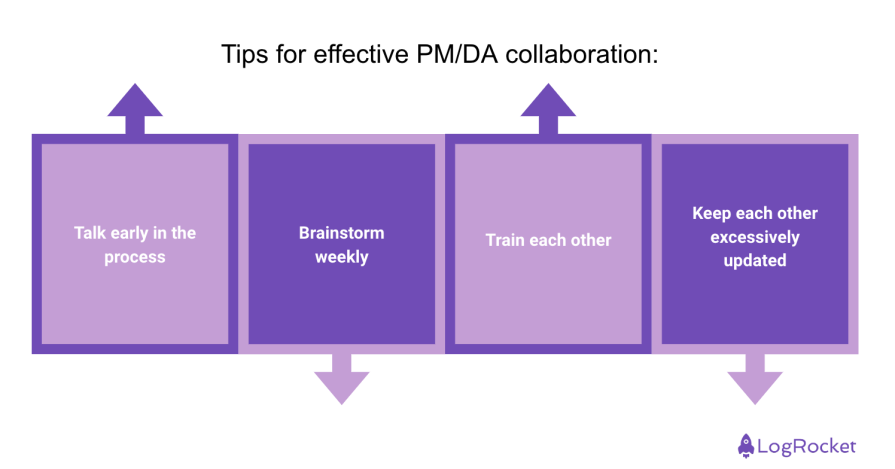A dedicated data analyst (DA) on a team can be a game-changer for the quality and speed of product discovery, yet many product teams still don’t have them. There seems to be a lack of clear understanding of what value a data analyst can bring to a product team, let alone how to work with one effectively.

If you are working with a data analyst for the first time or considering bringing one to your team, this article is for you.
I’ll dive deeper into what data analysts do, how they can benefit product teams, and, most importantly, how to bring PM/DA collaboration to the next level.
A data analyst is a person, usually with a statistical background, who’s responsible for everything data-related.
Data analysts help with tracking implementation, setting up A/B tests, data analysis, and deriving insights and lessons from various data sources.
A great data analyst has a strong understanding of statistics, SQL, databases, data visualization, and storytelling.
To better understand the role, let’s examine the most important responsibilities of a data analyst:

A/B testing is the ultimate validation tool, but it’s not as straightforward as it might seem. You can’t just test two variants and declare the best-performing one a winner. There’s a lot of extra math and consideration that comes into play.
Data analysts ensure both efficiency and accuracy of A/B tests by:
Although you can do basic A/B testing independently, with a data analyst on board, you’ll be faster and more precise.
Data can tell a lot about your product and audience, assuming you actually monitor it regularly. Simple as it might sound, there’s much more to it than just watching dashboards.
Proper metrics monitoring includes:
It doesn’t matter how great your insights are if they’re based on flawed data.
Data can lie to you because:
In the best-case scenario, these situations will cost you some time and nerves. In the worst case, they can lead to wrong and damaging decisions.
You can avoid those situations with proper data governance like:
Great data analysts always ensure the data they work on is clean and usable.
Last but not least, data analysts are great partners when it comes to planning and revising product and business strategy.
They bring additional context to the conversation, often having the best understanding of what’s going on on the quantitative side of things. This both brings new insights to the table and helps quickly validate ideas.
Data analysts are also great roadmapping partners. They help split big strategic bets into smaller, isolated experiments to maximize learnings and mitigate risks.
Although the benefits of having a data analyst should be already obvious, let’s recap them quickly:
By now, it should already be clear that a data analyst is one of, if not the, most important collaboration partners for product managers.
However, how much you can get out of your data analyst depends heavily on the quality of your collaboration. Even the best data analyst won’t be able to bring you insights if your collaboration process sucks.
Over time, I’ve had my highs and lows collaborating with DAs. Here are some of my best tips on elevating this relationship:

My most common mistake was figuring out an idea, planning it initially with designers, and then bringing it to an analyst to review and prepare analytical events. It often ended up with a DA finding flaws in our ideas based on the data they had.
Over time, I learned that a data analyst should be engaged from day one. The quantitative context DA brought allowed us to kill mediocre ideas earlier and ideate better solutions.
A loose weekly meeting with a single bullet agenda turned out to be a game changer.
Both product managers and data analysts tend to have interesting insights and thoughts on the product direction. When you connect those two perspectives, magic happens.
You can refine your DA’s ideas by adding strategic and business context, while your DA can refine yours with extra quantitative insights. Add a UX designer to the mix and you have the perfect recipe for innovation.
Spend some time for skills-sharing sessions; they pay off a great deal.
Not only do they make collaboration easier in general, but the more you know about DA topics, the more independent you can become, and the more time your DA can spend on strategic thinking and insight gathering. On the other hand, the more your analyst understands the principles of product management, the more efficiently they work, as they can better prioritize their research based on business impact.
The next time you have a request to your data analyst, instead of asking them to deliver it, ask them to teach you how to do it yourself.
Although involving DAs early in the process and having weekly brainstorms might already seem like a lot of information sharing, my experience says otherwise.
There’s always something going on. A new interesting trend on a chart, a new insight on user interview, a new idea from CPO — you name it.
It might turn out that a seemingly irrelevant product insight correlates strongly with a seemingly irrelevant data insight, which might open a brand new train of thought that can lead to genuinely breakthrough insights.
Half of my best ideas came from random conversations with my DA and connecting dots we hadn’t seen before.
I don’t have any fancy process here. I simply spam my DA’s Slack all the time—excessively at times, but we both agree it brings enormous value.
In theory, a product manager could handle data analyst responsibilities with the support of developers. In many early-stage companies, that’s how it works.
However, there are significant differences between doing something and doing something well. A great product manager should be able to:
Over time, the quality of your insights and experiments will drop, lack of data governance will lead to confusion, errors, and bloated data processing costs. The more mature the product and the more potential insights you can get from data, the higher the ROI of having a DA becomes. Don’t oversleep at this moment.
Featured image source: IconScout

LogRocket identifies friction points in the user experience so you can make informed decisions about product and design changes that must happen to hit your goals.
With LogRocket, you can understand the scope of the issues affecting your product and prioritize the changes that need to be made. LogRocket simplifies workflows by allowing Engineering, Product, UX, and Design teams to work from the same data as you, eliminating any confusion about what needs to be done.
Get your teams on the same page — try LogRocket today.

A practical guide for PMs who want to stop being bottlenecks, delegate smarter, and lead teams effectively with a clear ownership framework.

Stop letting unreliable data block features. Treat data as inventory to track quality, ownership, and ship with confidence.

Learn why slide decks slow teams down and explore better tools like whiteboards, PRDs, and prototypes to improve collaboration and alignment.

AI PM roles are evolving fast. Learn the five types of AI PMs, the skills they need, and how they shape AI products across industries.